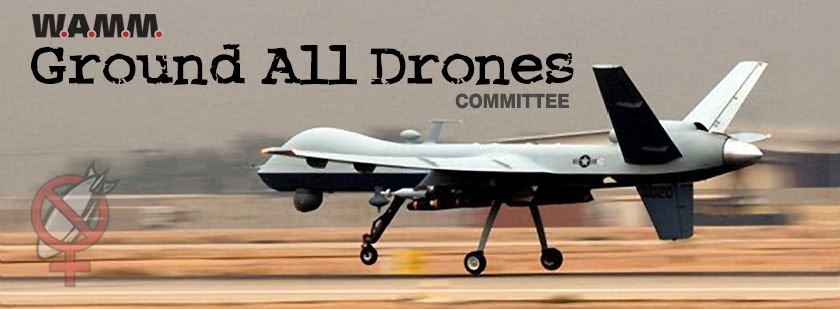In an unprecedented open letter to President Obama, four U.S. Air Force
servicemembers who took part in the drone war say targeted killings and
remote-control bombings fuel the very terrorism the government says it’s
trying to destroy. Two of the signatories, former sensor operator
Stephen Lewis and former Air Force technician Cian Westmoreland, tell us
why they are speaking out for the first time about what they did.
"Anybody in the Air Force knows that an air strike has collateral damage
a significant amount of the time," Westmoreland says. "I’m saying it
wasn’t all enemies. It was civilians, as well."
TRANSCRIPT This is a rush transcript. Copy may not be in its final form.
JUAN GONZÁLEZ:
Stephen Lewis, I wanted to ask you—you made one kill, and then you
immediately appealed to your superiors about—about what you were doing.
Could you talk about your experience, who you killed?
STEPHEN LEWIS: It was late 2009, and I was tasked to go support a troop in contact. And that’s whenever our troops are taking fire.
JUAN GONZÁLEZ: And this was in which country?
STEPHEN LEWIS:
Oh, this is in Afghanistan. And during this troops in contact, we were
told to go to this specific location. It was four guys walking down a
mountain path. And I didn’t see any weapons. I didn’t see anything.
About five minutes goes by, and two Hellfires come in, and they kill
three people. And there was one wounded guy left. I was given clearance
to—we were given clearance to fire the missile. And that guy just—he
just wasn’t there anymore.
JUAN GONZÁLEZ: This is—you were given clearance to fire at the wounded guy on the ground.
STEPHEN LEWIS: Yes.
AMY GOODMAN: So what did you do next?
STEPHEN LEWIS:
Seriously re-evaluated my life. Shortly after that, I ended up writing a
very, very convincing letter to my leadership and told them that I
didn’t belong there, I didn’t want to do it anymore, and I wanted out.
AMY GOODMAN: And what was their response?
STEPHEN LEWIS: Six months later, I was out of the Air Force.
AMY GOODMAN: How are you chosen as a drone operator?
STEPHEN LEWIS:
I was chosen basically at random. I went to imagery analysis school,
which I—I wanted to look at satellite photos. That’s what I wanted to
do. And about halfway through it, they come up and they say, "You’re
going to Las Vegas. You’re going to go to sensor operator school, and
you’re going to do this." There’s—
AMY GOODMAN: Did they say why?
STEPHEN LEWIS: They don’t have to. There is no argument there. It’s "Yes, sir, yes, ma’am, I’ll do whatever you tell me to."
AMY GOODMAN:
And now that you’re out of the Air Force, how has what you did in the
Air Force, being a drone operator, engaging in that kill, affected you?
STEPHEN LEWIS:
It makes any kind of relationship difficult. I can’t—I can’t
communicate properly with my friends. I have to preface it with "I’m
sorry, guys. I can’t hang out with you tonight. There’s too much going
on right now." It’s, in effect, killed every single relationship that
I’ve had afterwards. I can’t—
JUAN GONZÁLEZ: What about
this issue that you raise in your letter, how the drone program is
actually helping to fuel or create more terrorism?
STEPHEN LEWIS: Well, it’s been noted in the film,
Drone,
that kids are afraid to go outside and play, or go to school during the
day, whenever the sun is out, whenever the sun is shining, because
they’re afraid that they’re going to get struck by a drone.
Continue on
Democracy Now!
Part of three segments found on Democracy Now! From November 20, 2015 See video and interview there.


